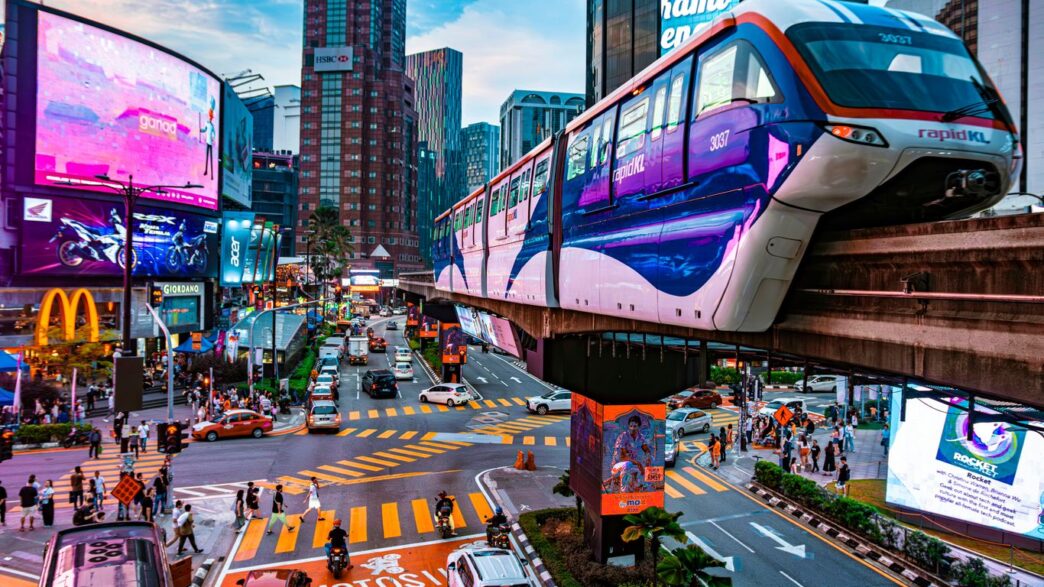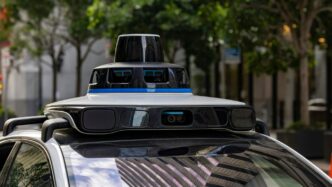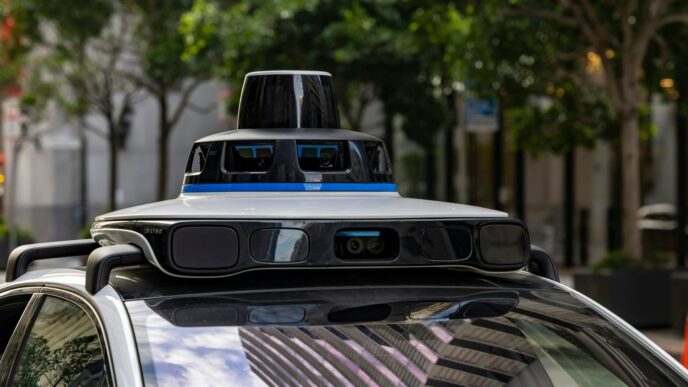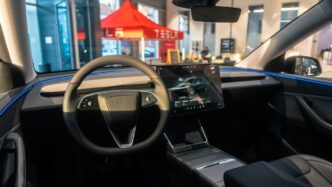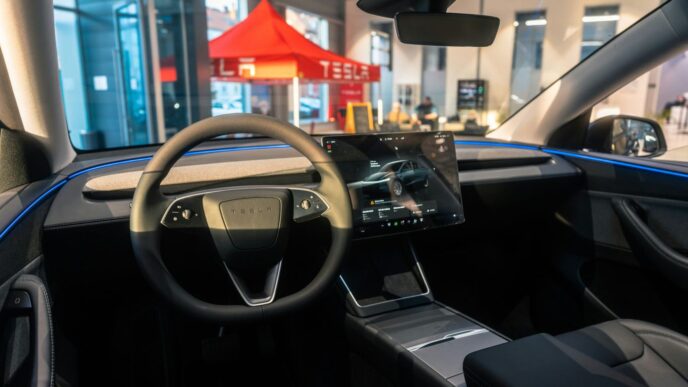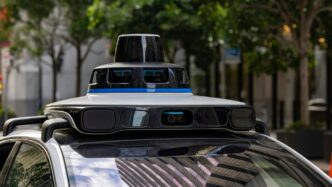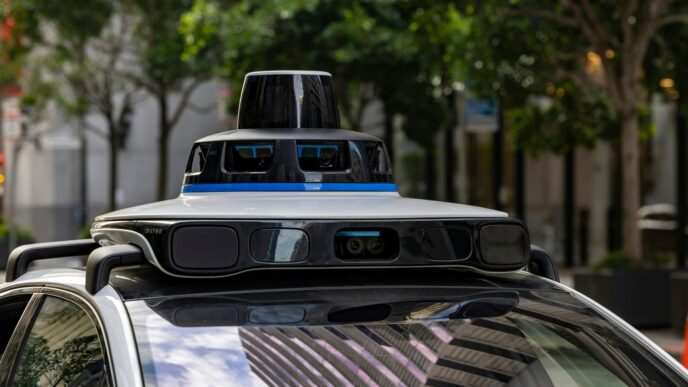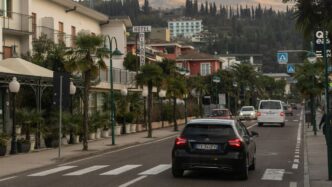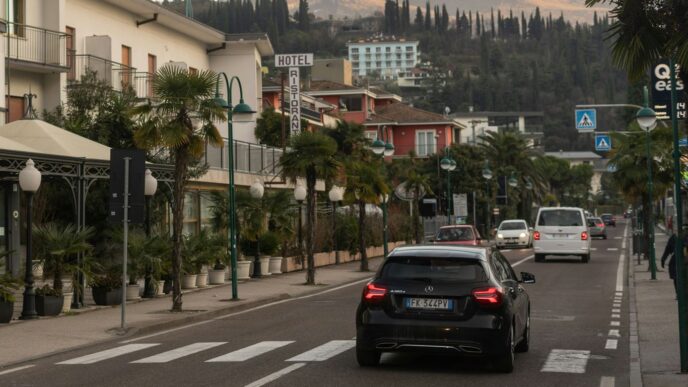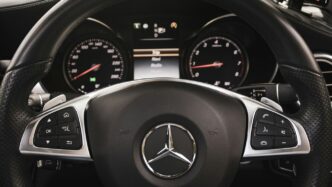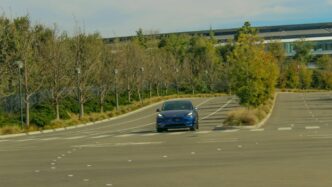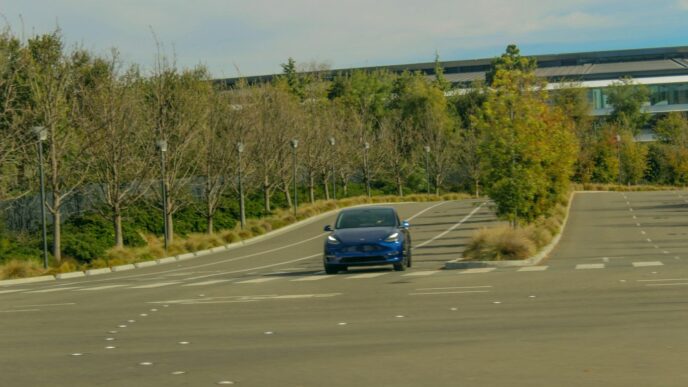Revolutionizing Transportation with IoT

It’s pretty wild how much the way we get around is changing, right? A lot of that has to do with the Internet of Things, or IoT. Basically, it’s about connecting everyday objects – like cars, buses, and even traffic lights – to the internet so they can talk to each other and send information. This isn’t just a small upgrade; it’s a whole new way of doing things, moving us away from old, slow methods to something much more dynamic and data-driven.
Real-Time Monitoring and Enhanced Safety
One of the biggest wins with IoT in transport is keeping a close eye on things as they happen. Fleet managers can now see exactly where their vehicles are, how they’re performing, and even how drivers are behaving, all without lifting a finger. This kind of instant info means they can spot potential problems, like a vehicle acting up, before it turns into a big issue. It also helps make sure routes are efficient and delays are cut down. Plus, think about all the paperwork that used to slow drivers down – now that it’s digital, they can focus more on actually driving and getting things done. This constant stream of data is making our roads safer for everyone.
Predictive Maintenance for Vehicle Health
Remember when you’d only find out your car needed a fix when it broke down? IoT is changing that game. By putting sensors and cameras on vehicles, we can get a heads-up about potential problems way before they happen. This means mechanics can step in and fix things proactively, rather than waiting for a breakdown. It’s like having a doctor for your car, constantly checking its vitals. This not only keeps vehicles running smoothly but also cuts down on unexpected downtime and costly repairs. It’s a smarter way to keep our transport running.
Streamlining Operations with Digital Data
Before IoT, a lot of transport operations relied on manual checks and paper logs. It was slow and prone to errors. Now, with digital data flowing in real-time, everything is much smoother. Think about how much easier it is to manage a fleet when you have all the information you need at your fingertips. This shift to digital means less time spent on admin tasks and more time focused on the actual job. It helps make sure everything runs on schedule and resources are used wisely. It’s about making the whole system work better, with less hassle.
The Impact of IoT Transport on Urban Mobility
Cities are getting smarter, and a big part of that is how we get around. The old ways of traffic lights just going through a set pattern or buses running on a schedule that might not fit actual demand are fading fast. IoT is changing all that, making urban travel smoother and, honestly, a lot less frustrating. It’s about using data from all sorts of connected devices to make our cities move better.
Smart Traffic Management Systems
Remember sitting in traffic, wondering why the light just turned red when no one was coming the other way? IoT is fixing that. Sensors on roads and in vehicles talk to each other and to central systems. This means traffic lights can actually adjust based on real-time traffic flow. If one road is packed and another is empty, the system can shift the green lights to where they’re needed most. It’s like having a conductor for the city’s traffic orchestra.
Here’s a quick look at what these systems can do:
- Adaptive Signal Control: Lights change timing based on actual vehicle presence, not just a timer.
- Incident Detection: Sensors can spot accidents or stalled vehicles faster, alerting authorities and rerouting traffic.
- Dynamic Speed Limits: Adjusting speed recommendations based on current road conditions or congestion.
Enhancing Public Transportation Networks
Public transport is getting a serious upgrade thanks to IoT. Think about real-time bus tracking – you can see exactly where your bus is on an app, so no more guessing games at the bus stop. But it goes deeper than that. IoT helps transit agencies understand passenger flow, optimize routes, and even predict when vehicles need maintenance before they break down. This means more reliable service and fewer delays for everyone.
- Real-time Passenger Information: Accurate arrival times displayed at stops and on apps.
- Fleet Management: Tracking vehicle location, speed, and diagnostics for better operational control.
- Demand-Responsive Services: Adjusting routes or schedules based on where people actually need to go, especially during off-peak hours.
Reducing Congestion and Emissions
When traffic flows better and public transport is more appealing, fewer people feel the need to drive their own cars. This has a direct impact on reducing traffic jams. Less idling in traffic means less fuel burned and, consequently, fewer harmful emissions polluting our air. IoT helps optimize routes for delivery trucks too, cutting down on unnecessary miles driven. It’s a win-win for city dwellers and the planet.
Global Adoption of IoT in Transportation
The way we move around is changing, and the Internet of Things (IoT) is a big reason why. It’s not just about making things a little better; it’s a whole new system built on real-time information. Countries all over are jumping on board, each with their own focus.
Connected Vehicle Ecosystems in the US
In the United States, the number of cars that can connect to the internet is really taking off. Think about it: your car sending data about how it’s running, or even how you’re driving. Fleet managers are using this information to keep an eye on their vehicles, making sure they’re running smoothly and drivers are safe. This means fewer breakdowns and more efficient trips. It’s all about using that constant stream of data to make smarter choices on the fly.
Sustainable Transit Solutions in the UK
The UK is looking at IoT to make public transport and electric vehicles greener. They’re integrating these smart technologies to manage energy use better and make sure everything runs efficiently. This helps cut down on pollution and makes public transit a more attractive option. It’s a move towards a cleaner, more connected way to get around.
Autonomous Vehicle Strategies in Dubai
Dubai is really pushing the envelope with autonomous vehicles. They’re building out the infrastructure and testing systems that rely heavily on IoT. The goal is to create a future where self-driving cars are a common sight, making transportation smoother and potentially safer. This involves a lot of complex communication between vehicles and the city’s systems.
Across the globe, different regions are finding unique ways to use IoT in transport. Germany is linking IoT with its industrial tech for better logistics, while China is using it for shared services and smart travel. India is focusing on traffic control and ride-sharing. It’s clear that IoT is shaping transportation into something more intelligent, secure, and adaptable for everyone.
Synergy of IoT and AI in Mobility
It’s pretty wild how much the Internet of Things (IoT) and Artificial Intelligence (AI) are changing how we get around. Think of IoT as the eyes and ears of the transportation world – all those sensors on cars, roads, and traffic lights collecting tons of information. But that data? It’s just noise until AI steps in. AI is like the brain, making sense of all that input, spotting patterns, and making smart decisions. Together, they’re creating a transportation system that’s way more aware and responsive.
Data-Driven Decision Making
This combo means we’re not just guessing anymore. We’re looking at real facts. For example, traffic managers can see exactly where jams are forming, not just where they think they are. This lets them adjust things on the fly. It’s like having a super-detailed map that updates itself constantly.
- Real-time traffic flow analysis: IoT sensors gather data on vehicle speed and density.
- Incident detection: AI algorithms can spot accidents or breakdowns from sensor data patterns.
- Predictive demand forecasting: Analyzing historical data to anticipate when and where more transport will be needed.
Intelligent Route Optimization
Remember when you used to just pick the route you thought was best? Now, AI and IoT work together to find the actual best route, right now. Your GPS app does this already, but it’s getting way more sophisticated. It’s not just about the shortest distance; it’s about avoiding unexpected delays, considering fuel efficiency, and even personal preferences.
| Factor Considered | Impact on Route | Example Scenario |
|---|---|---|
| Traffic Congestion | Longer travel time | AI reroutes a delivery truck around a sudden accident. |
| Road Closures | Significant detour | System suggests an alternative route due to unexpected construction. |
| Fuel Efficiency | Increased mileage | AI optimizes a route for a fleet to minimize fuel consumption. |
Enabling Autonomous Driving Capabilities
This is where things get really futuristic. Self-driving cars are the poster children for IoT and AI working together. They need those IoT sensors – cameras, radar, lidar – to see everything around them. Then, the AI has to process all that information in milliseconds to decide whether to brake, steer, or accelerate. It’s a constant stream of data and decisions, happening faster than any human could manage. This technology is still being worked on, but it’s already showing huge promise for making roads safer and travel more convenient for everyone.
Advancements in Smart Infrastructure
Think about how much smoother your commute could be if the roads and traffic signals actually knew what was going on. That’s the idea behind smart infrastructure, and it’s really starting to change things. It’s all about using technology, especially IoT, to make our transportation systems work better, not just for drivers, but for everyone.
Adaptive Signal Control Systems
These aren’t your grandma’s traffic lights. Instead of just sticking to a fixed timer, these signals use sensors and data to figure out how much traffic is actually there. If one direction has a huge backup and the other is clear, the lights can adjust. This means less time sitting at red lights when there’s no cross-traffic. It’s like the intersection is thinking for itself.
Dynamic Lane Management
Ever been stuck in traffic because lanes are closed or used inefficiently? Dynamic lane management systems can change that. Using overhead signs and sensors, they can adjust which lanes are open or even change their direction based on traffic flow. For example, during rush hour, more lanes might be opened up to handle the inbound traffic, and then reversed for the outbound flow later. This helps make the most of the road space we already have.
Road Condition Monitoring
Nobody likes hitting a pothole unexpectedly, and it can be dangerous too. Smart infrastructure can help with this. Sensors embedded in the road, or even sensors on vehicles themselves, can detect things like potholes, ice, or other hazards. This information can be sent out in real-time to drivers, warning them to slow down or take a different route. It also helps city maintenance crews know exactly where repairs are needed most, making road upkeep more efficient.
The Role of 5G in IoT Transport

So, we’ve talked a lot about how IoT is changing how we get around. But what’s really making all these connected systems work, and work well? A big part of that is 5G. Think of it as the superhighway for all the data these smart transport systems need to send and receive.
Enabling Seamless Device Communication
Before 5G, getting tons of devices to talk to each other reliably was a real headache. 5G changes that. It’s built to handle a massive number of connections at once. This means your smart traffic lights, sensors on the road, and even the cars themselves can all chat without dropping the signal. This constant, reliable flow of information is what makes real-time adjustments possible.
Supporting Bandwidth-Intensive Applications
Some of the cool stuff we’re seeing in transport needs a lot of data. We’re talking about high-definition video feeds from buses for passenger safety, or augmented reality overlays for drivers. 5G has the speed and capacity to handle these big data streams. It’s not just about getting from point A to point B anymore; it’s about making the journey better and safer with rich data.
Accelerating Autonomous Vehicle Deployment
Autonomous vehicles are the big dream for many, but they need to make decisions in milliseconds. They rely on constant communication with their surroundings – other cars, traffic signals, pedestrians. 5G’s low latency, meaning very little delay in data transfer, is absolutely key here. It allows vehicles to react almost instantly to changing conditions, which is a must for safe self-driving. Without 5G, widespread autonomous driving would be much further off.
The Road Ahead
So, what does all this mean for how we get around? Basically, the way we move people and stuff is changing, and it’s happening fast. IoT is taking transportation from something that was kind of slow and reactive to something that’s smart and always looking ahead. Think fewer breakdowns because we know about problems before they happen, smoother traffic because systems talk to each other, and maybe even a bit less pollution. It’s not just about making things a little better; it’s a whole new way of thinking about getting from point A to point B. While there are still some hurdles to jump, like making sure all our data is safe and that different systems can actually work together, the direction is clear. We’re heading towards a future where travel is more connected, safer, and hopefully, a lot more efficient for everyone.


